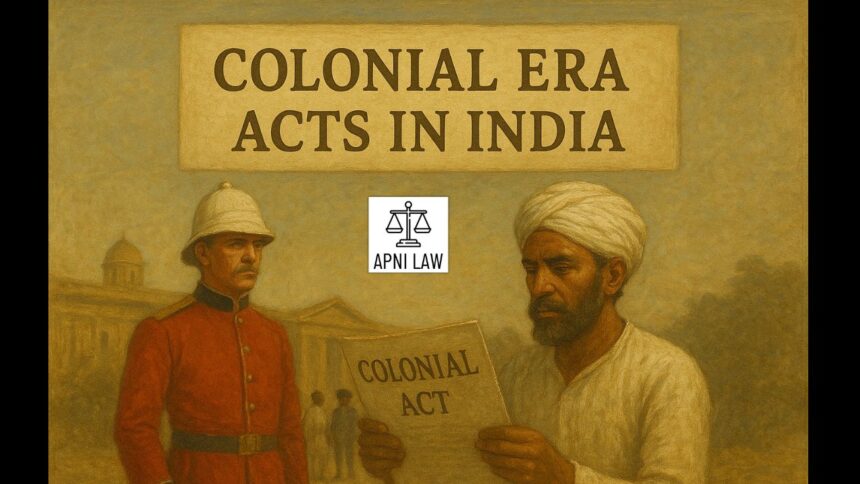Introduction
The mid-nineteenth century was a turning point in India’s constitutional history. By this time, the East India Company had ruled large parts of India for over a century, but pressure was mounting from both Britain and India for reforms in governance. The system of administration under the Company was marked by patronage, where jobs and positions in civil services were handed out based on connections rather than merit. Growing discontent, along with calls for efficiency and fairness, forced the British Parliament to rethink the existing system.
It was against this background that the Charter Act of 1853 was passed. Unlike earlier Charter Acts that mainly renewed the Company’s charter, this Act introduced a number of structural changes. The most significant was the introduction of open competition in civil services, which became the foundation for India’s modern bureaucracy. The Act also altered the composition of the Governor-General’s Council, giving it a more legislative role. Together, these reforms marked the beginning of India’s transition toward a professional and merit-based administrative framework.
Background to the Charter Act of 1853
Before 1853, the East India Company functioned under a system that largely depended on political patronage. Civil service jobs were typically reserved for British elites, with appointments made through nominations rather than merit. This not only created inefficiency but also raised concerns about corruption and incompetence.
By the mid-1800s, influential thinkers in Britain such as Lord Macaulay advocated for a civil service that selected officers on merit through a fair system of competitive examinations. The British Parliament also realized that India, with its vast population and diversity, required administrators of higher caliber. The Charter Act of 1853 became the tool to bring this change, ensuring that competence, not favoritism, would decide who governed India.
Key Provisions of the Charter Act of 1853
The Charter Act of 1853 introduced reforms that separated it from its predecessors. It did not grant the East India Company a fixed renewal of 20 years, as had been the practice earlier. Instead, the renewal was made temporary, signaling that British Parliament was increasingly taking control of Indian governance.
The most remarkable reform under this Act was the introduction of open competition for civil services. For the first time, recruitment was opened to all British subjects, theoretically allowing Indians to compete as well. The Act also restructured the Governor-General’s Council, creating a separate legislative wing. This was a major step because it distinguished between legislative and executive functions, making lawmaking a more specialized process.
The Council was expanded to include six legislative members, who could debate and pass laws. Though these members were still nominated and not elected, the move reflected a shift towards a more organized and participatory form of governance.
Open Competition in Civil Services
Perhaps the greatest legacy of the Charter Act of 1853 was the establishment of merit-based recruitment through competitive examinations. This move transformed the civil services from a patronage-driven system into one that valued talent and ability.
Examinations for entry into the Indian Civil Service (ICS) were to be conducted in London under the supervision of the Civil Service Commission. This created a major hurdle for most Indians, since travel to England was expensive and preparation required a strong English education. Nevertheless, the very idea that Indians could compete for these positions was groundbreaking.
One of the earliest Indians to break this barrier was Satyendranath Tagore, who cleared the ICS examination in 1863. His success inspired later generations to pursue civil services, making the bureaucracy a prestigious career path in India. Over time, this principle of merit-based entry became deeply embedded in India’s administrative framework, and continues to guide the Union Public Service Commission (UPSC) examinations today.
Impact on Indian Governance
The Charter Act of 1853 set in motion reforms that shaped India’s constitutional and administrative development. By introducing competitive examinations, it brought professionalism and efficiency into governance. While initially limited in scope, the reform laid the foundation for a bureaucracy that continues to serve as the backbone of governance in independent India.
The restructuring of the Governor-General’s Council also marked an important shift. By creating a separate legislative wing, the Act moved India closer to modern constitutional governance, where the legislature and executive are distinct bodies. Although Indians were still excluded from significant decision-making at the time, these reforms planted the seeds for greater participation and future constitutional growth.
Historical Significance
The Charter Act of 1853 is often remembered as the first serious attempt to bring meritocracy into Indian administration. It also reflected the British Parliament’s growing control over Indian affairs, reducing the East India Company’s monopoly and signaling the eventual transfer of power to the British Crown in 1858 after the Revolt.
Most importantly, the Act highlighted the need for efficiency and accountability in governance. Even though it was not fully inclusive, it acknowledged that India needed administrators who were both capable and impartial. This idea would evolve over time, influencing later reforms and shaping the modern Indian Civil Services system.
FAQs on Charter Act of 1853
What was the main feature of the Charter Act of 1853?
The most significant feature was the introduction of open competition for recruitment into the Indian Civil Services, marking a shift from patronage to merit-based selection.
How did the Act change the Governor-General’s Council?
The Act expanded the Council and created a separate legislative wing, making lawmaking a distinct function from the executive.
Why is the Charter Act of 1853 considered a turning point in Indian administration?
It marked the beginning of professional bureaucracy in India, establishing competitive exams as the method of entry into civil services, a principle that continues today.
Conclusion
The Charter Act of 1853 stands as a milestone in India’s colonial history. By opening the civil services to competitive examinations, it introduced the principle of meritocracy into governance. By restructuring the Governor-General’s Council, it took the first step toward separating legislative and executive powers. Though Indians faced significant barriers in accessing these opportunities, the Act symbolized progress toward a modern and professional administrative system.
The impact of this Act continues to resonate, as the system it created ultimately laid the foundation for India’s current civil services. In many ways, the Charter Act of 1853 was not just a colonial reform but also the beginning of India’s long journey toward democratic governance and equal opportunity in administration.
For any specific query call at +91 – 8569843472







